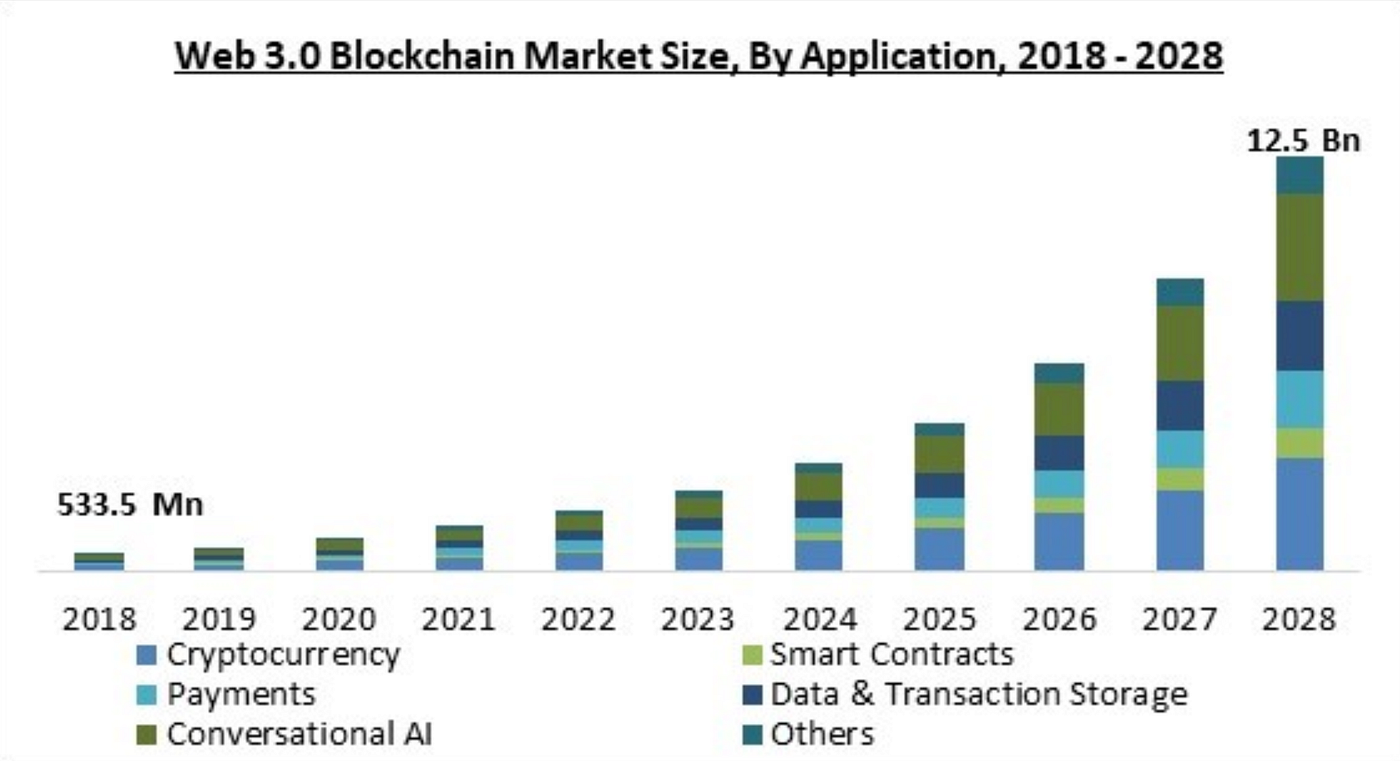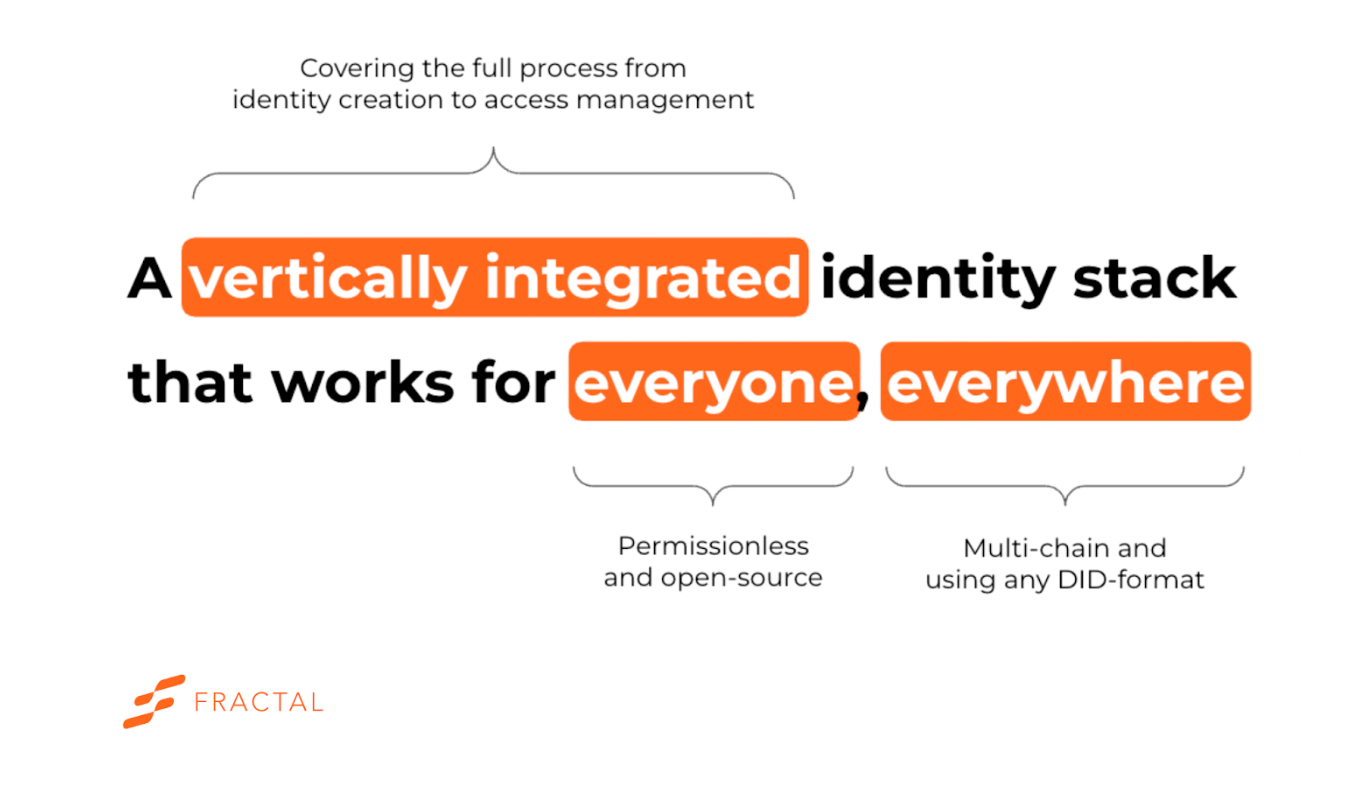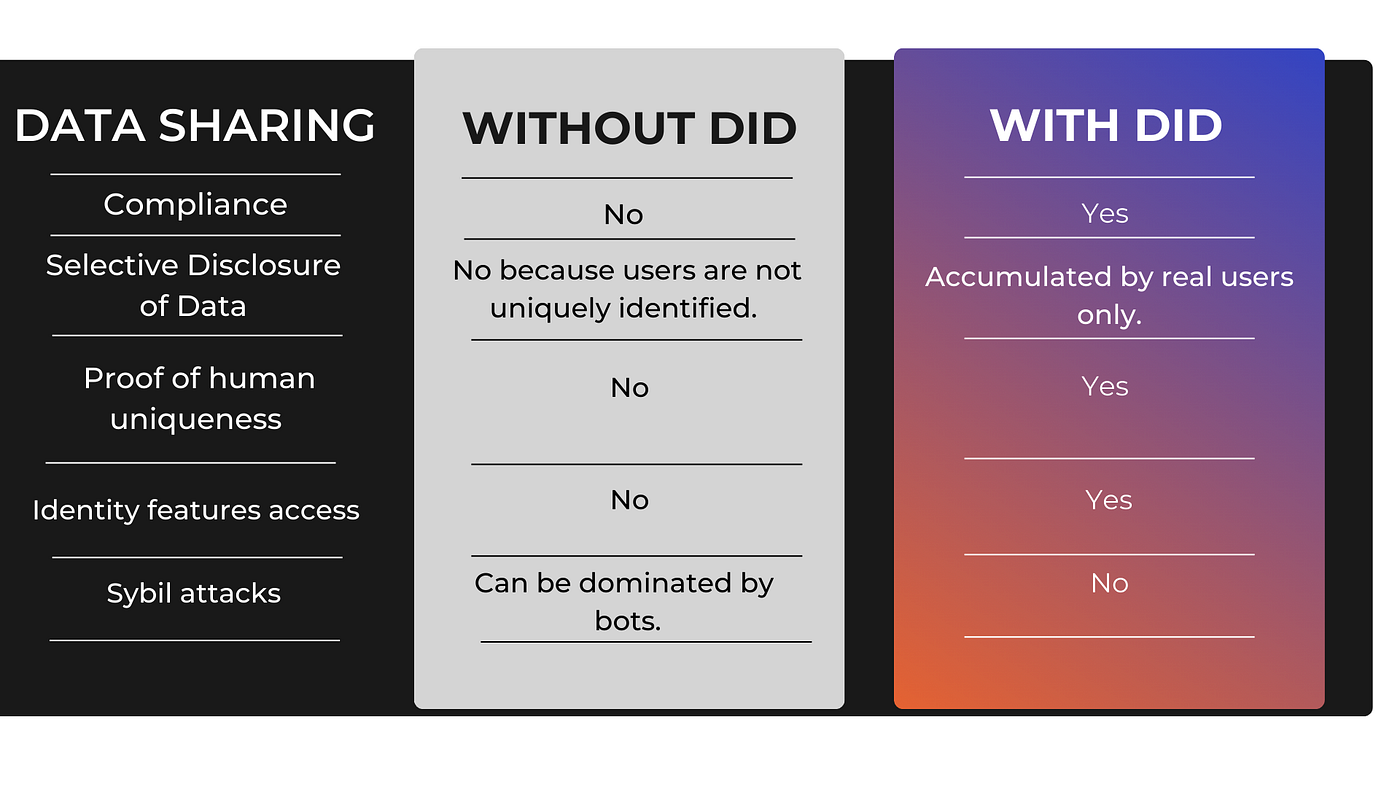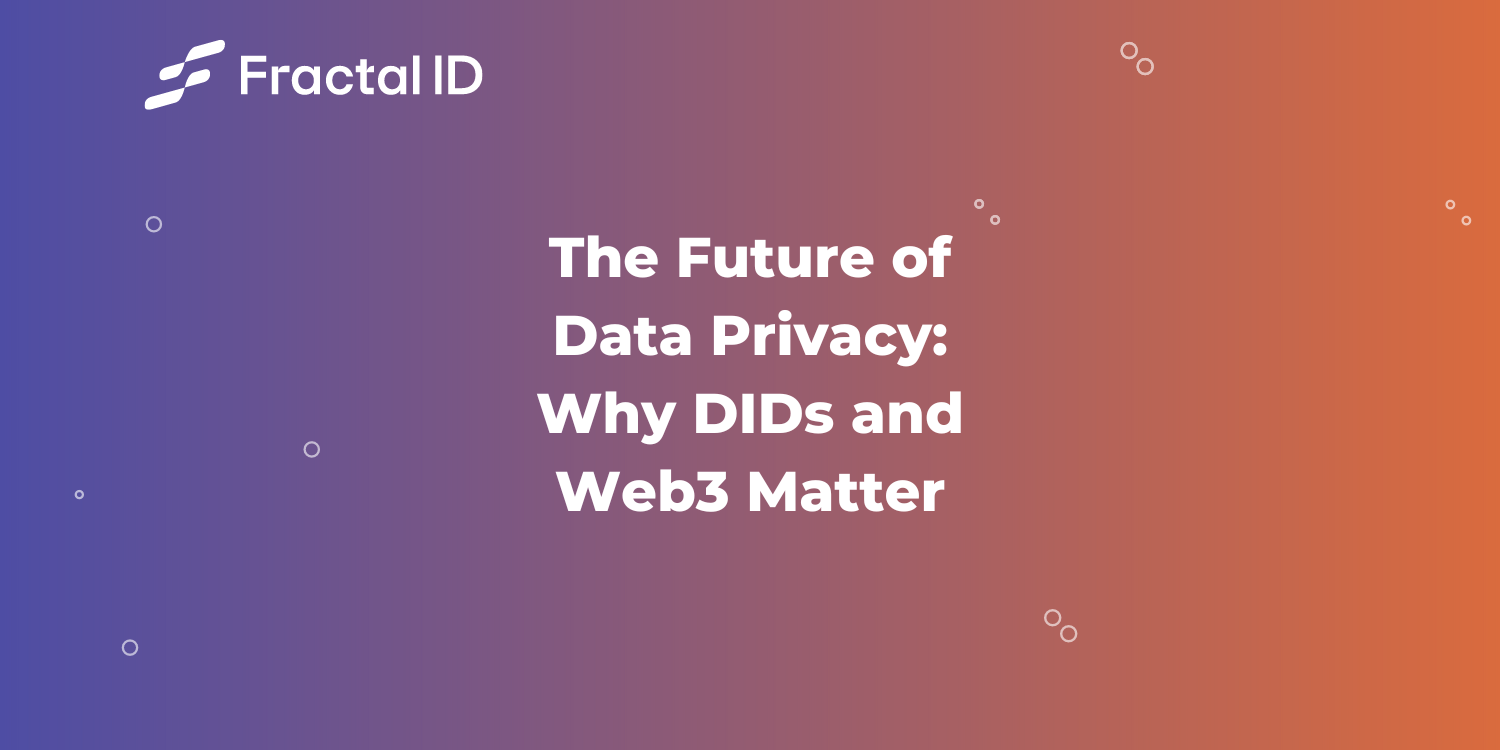1. Introduction
In today’s digital landscape, personal data has emerged as a highly valuable commodity. Companies and organizations collect an increasing amount of data about individuals, well aware of data’s revolutionary potential to overhaul business performance. The McKinsey Global Institute estimates that data and analytics could create value worth between $9.5 trillion and $15.4 trillion a year — provided its value is properly harnessed.
However, while the benefits of this data can be significant, the risks to individuals’ privacy and security are equally concerning. In this blog post we explore how web3 is changing data privacy and why decentralized identities are critical for protecting personal information in the decentralized web. We’ll also look at some of the challenges and opportunities facing web3 and decentralized identities and what this means for the future of online privacy.
Let’s dive in!
2. The Rise of Data: Opportunities and Challenges
The potential benefits of a full-scale data economy are immense. It has the power to transform industries, drive innovation, and create new opportunities for businesses and individuals alike. In line with this, the adoption of data analytics has been on the rise across industries, with businesses leveraging large amounts of data to improve decision-making, enhance customer experiences, and gain a competitive edge. According to a recent report by the International Data Corporation (IDC), the global data sphere is projected to reach 175 zettabytes by 2025, with an annual growth rate of 61%. This represents a massive opportunity for businesses to harness the power of data and transform their operations.
In the finance industry, data is being leveraged to assess credit risk, detect fraud, and optimize trading strategies. In healthcare, clinical decision-making, disease management, and population health management are made easier with data. Additionally, with the global artificial intelligence market size valued at USD 136.55 billion and gaining steady adoption, data is relied upon to train its algorithms and make accurate predictions. The more data that is available, the better businesses can become at identifying consumer patterns, making predictions, and providing insights to fuel strategic decisions.

Source: Statista
However, pressing challenges need to be mitigated to realize a full-scale adoption of the data economy. Along with the lack of standardization in data collection and management, there remain pertinent concerns around data privacy and security, with businesses needing to ensure they are complying with regulatory requirements and protecting sensitive data from cyber threats. According to a report by IBM, the average cost of a data breach in 2020 was $3.86 million which also revealed that organizations lose an estimated 5% of their annual revenues to data-related fraud.
The need of the hour, therefore, becomes the adoption of technologies that allow for the implementation of robust security measures, ensure complete user control, and eliminate the need for centralized data repositories that are vulnerable to cyber-attacks. That’s where web3 comes in.
3. Web3 and Better Data Management: Why is it the obvious solution?
Blockchain technology has emerged as a powerful tool for addressing concerns around data privacy and security. By giving users more control and creating a more decentralized and transparent system, these technologies have the potential to create a more secure and equitable data economy. Unlike traditional centralized systems like leading social media applications, and data storage services like iCloud, banks, etc where data is vulnerable to cyber-attacks and breaches, decentralizing data storage is a step in the right direction towards ensuring privacy and security. The use of cryptographic algorithms and digital signatures with decentralized storages like IPFS, Storj, etc can ensure that only authorized parties can access or modify the data.
Providing an immutable and tamper-proof record of all data transactions, blockchain technology helps ensure the security and integrity of the data which makes it a solution for sensitive data such as financial information, personal health records, and identity information.

Source: Global Web 3.0 Blockchain Market Size, Share & Industry Trends Analysis Report by Application, Blockchain Type, End-use (BFSI, IT & Telecom, Media & Entertainment, Retail & E-commerce, Pharmaceuticals), Regional Outlook and Forecast, 2022–2028.
4. What is the need for Decentralized Digital Identities?
Data-sharing protocols are popular and offer numerous benefits that can present some privacy and security risks for users. There is a risk of data breaches or hacks that could compromise sensitive user information and affect users’ trust in the platform. Furthermore, because these protocols are decentralized, they may face difficulties in complying with regulations, which can increase risks associated with data sharing. To address these challenges and enhance security, it is crucial to incorporate an identity layer such as DIDs (Decentralised Digital Identities).
The benefits of implementing decentralized identity across data-sharing platforms are many:
4.1 Security
DIDs provide a secure way for users to authenticate themselves and control their digital identity. By leveraging cryptography, decentralized identities offer cryptographic guarantees that prevent unauthorized access to user data, and enable users to control how their data is shared across different applications and services. This can help to reduce data breaches and hacking attacks, which are a major concern in the centralized digital identity management systems that currently dominate the web.
4.2 Privacy
DIDs as part of a larger decentralized digital identity stack, enable users to maintain greater privacy and anonymity online, by allowing them to choose what information they share with different services and applications. This is in contrast to traditional centralized identity management systems, which often require users to provide a lot of personal information in order to use the service. By using decentralized identities, users can choose to reveal only the information that is necessary for a particular interaction, rather than sharing their entire identity and personal information.
4.3 Interoperability
Decentralized identity systems can help to enable interoperability between different web3 applications and services, by providing a standard way for users to authenticate themselves and control their data across different platforms. This can help to reduce the need for users to create multiple accounts and manage different sets of login credentials, which can be a frustrating and time-consuming experience. By using decentralized identities, users can maintain a consistent digital identity across different web3 services, which can help to streamline the user experience and promote greater adoption of decentralized applications and services.
Let’s illustrate this further.
Suppose there is a DAO that mandates DIDs to ensure that each member has only one vote. Users that are members of that DAO may have accounts on several different blockchain networks, including Ethereum and Binance Smart Chain. Each account has a different address, but they are all linked to the user’s DID.
When the user wants to vote on a proposal in the DAO, they first need to authenticate themselves using their DID. The DAO then verifies the identity and confirms that they only have 1 vote. This ensures that no user cannot use multiple addresses to gain an unfair advantage over other members.
At the same time, DIDs also help protect the privacy of DAO members. Because their identity is linked to a DID, rather than their individual addresses, it is much harder for anyone to track their activity on different blockchain networks. This helps ensure that data remains private and secure. In this way, DIDs make it easier for DAOs to operate fairly and transparently, while also protecting the privacy of their members.
5. The Fractal ID Solution
Founded in 2017, Fractal ID is the leading provider of identity solutions for web3, with nearly one million users distributed across more than 200 web3 projects. Fractal ID is currently engaged in building an all-encompassing identity stack that works for everyone, everywhere. Fractal ID is dedicated to extending support to dApps by fulfilling their specific identity requirements, ranging from complying with data and regulatory standards, including GDPR regulations, to facilitating seamless user verification via the use of Know Your Customer (KYC) and Anti-Money Laundering (AML) checks, alongside human liveliness checks.

The increase in regulatory scrutiny around data sharing protocols calls for proper Know Your Customer (KYC) compliance and identity verification solutions. Such measures ensure the establishment of trust and efficiency in data-sharing transactions, thus maximizing the benefits of the data economy.
Fractal ID offers identity solutions tailored to address various needs, including Sybil resistance for establishing human uniqueness and KYC/AML compliance to meet regulatory requirements. The identity integration options are customized to cater to the specific requirements of different web3 projects, ranging from conventional OAuth to decentralized identity solutions such as the DID Registry. Fractal ID technology also makes it easy for users across web3 platforms to easily manage their identity eliminating the need for users to create multiple accounts and manage different sets of login credentials, which can be a frustrating and time-consuming experience. This way, Fractal ID prioritizes a seamless user experience for web3 projects while safeguarding the privacy of users.

If you are interested in exploring how decentralized identities (DIDs) can help you and your project, book a meeting with our team.
